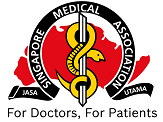Novel deletion of SPAST in a Chinese family with hereditary spastic paraplegia
Feng YP, Ke X, Zhai M, Xin Q, Gong YQ, Liu QJ
Correspondence: Dr Qiji Liu, liuqiji@sdu.edu.cn
ABSTRACT
Introduction Hereditary spastic paraplegia (HSP) belongs to a large, heterogeneous group of progressive neurodegenerative diseases characterised by progressive lower extremity weakness and spasticity, which is caused by developmental failure or degeneration of motor axons in the corticospinal tract. Classical genetic studies have identified at least 46 genetic loci responsible for HSP.
Methods A genetic study was conducted on a four-generation Chinese family with autosomal dominant HSP. The SPAST gene was investigated using linkage analysis and direct sequencing. Findings were compared with unaffected family members and 50 normal, unaffected individuals who were matched for geographical ancestry.
Results We identified a novel 14-bp heterozygous deletion that induced a frameshift mutation in exon 15 of SPAST (SPG4). This mutation is predicted to have functional impact and found to cosegregate with the disease phenotype.
Conclusion Our results have expanded the mutation spectrum of the SPAST gene. These findings could help clinicians provide prenatal diagnosis of affected foetuses in families with a known history of such neurodegenerative diseases.
Keywords: hereditary spastic paraplegia, mutation, spastin, SPG4
Singapore Med J 2013; 54(5): 251-254; http://dx.doi.org/10.11622/smedj.2013102
REFERENCES
| 1. Harding AE. Classification of the hereditary ataxias and paraplegias. Lancet 1983; 1:1151-5. http://dx.doi.org/10.1016/S0140-6736(83)92879-9 | ||||
| 2. Depienne C, Stevanin G, Brice A, Durr A. Hereditary spastic paraplegias: an update. Curr Opin Neurol 2007; 20:674-80. http://dx.doi.org/10.1097/WCO.0b013e3282f190ba | ||||
| 3. Stevanin G, Ruberg M, Brice A. Recent advances in the genetics of spastic paraplegias. Curr Neurol Neurosci Rep 2008; 8:198-210. http://dx.doi.org/10.1007/s11910-008-0032-z | ||||
| 4. Salinas S, Proukakis C, Crosby A, Warner TT. Hereditary spastic paraplegia: clinical features and pathogenetic mechanisms. Lancet Neurol 2008; 7:1127-38. http://dx.doi.org/10.1016/S1474-4422(08)70258-8 | ||||
| 5. Slabicki M, Theis M, Krastev DB, et al. A genome-scale DNA repair RNAi screen identifies SPG48 as a novel gene associated with hereditary spastic paraplegia. PLoS Biol 2010; 8:e1000408. http://dx.doi.org/10.1371/journal.pbio.1000408 | ||||
| 6. Fink JK. Hereditary spastic paraplegia. Curr Neurol Neurosci Rep 2006; 6:65-76. http://dx.doi.org/10.1007/s11910-996-0011-1 | ||||
| 7. Lin P, Li J, Liu Q, et al. A missense mutation in SLC33A1, which encodes the acetyl-CoA transporter, causes autosomal-dominant spastic paraplegia (SPG42). Am J Hum Genet 2008; 83:752-9. http://dx.doi.org/10.1016/j.ajhg.2008.11.003 | ||||
| 8. Meijer IA, Hand CK, Cossette P, Figlewicz DA, Rouleau GA. Spectrum of SPG4 mutations in a large collection of North American families with hereditary spastic paraplegia. Arch Neurol 2002; 59:281-6. http://dx.doi.org/10.1001/archneur.59.2.281 | ||||
| 9. Alvarez V, Sánchez-Ferrero E, Beetz C, et al. Mutational spectrum of the SPG4 (SPAST) and SPG3A (ATL1) genes in Spanish patients with hereditary spastic paraplegia. BMC Neurol 2010; 10:89. | ||||
| 10.The Human Gene Mutation Database [online]. Available at: www.hgmd.cf.ac.uk/ac/index.php. Accessed November 15, 2012. | ||||
| 11. Beetz C, Nygren AO, Schickel J, et al. High frequency of partial SPAST deletions in autosomal dominant hereditary spastic paraplegia. Neurology 2006; 67:1926-30. http://dx.doi.org/10.1212/01.wnl.0000244413.49258.f5 | ||||
| 12. Depienne C, Fedirko E, Forlani S, et al. Exon deletions of SPG4 are a frequent cause of hereditary spastic paraplegia. J Med Genet 2007; 44:281-4. http://dx.doi.org/10.1136/jmg.2006.046425 | ||||
| 13. Erichsen AK, Inderhaug E, Mattingsdal M, Eiklid K, Tallaksen CM. Seven novel mutations and four exon deletions in a collection of Norwegian patients with SPG4 hereditary spastic paraplegia. Eur J Neurol 2007; 14:809-14. http://dx.doi.org/10.1111/j.1468-1331.2007.01861.x | ||||
| 14. Mitne-Neto M, Kok F, Beetz C, et al. A multi-exonic SPG4 duplication underlies sex-dependent penetrance of hereditary spastic paraplegia in a large Brazilian pedigree. Eur J Hum Genet 2007; 15:1276-9. http://dx.doi.org/10.1038/sj.ejhg.5201924 | ||||
| 15. Solowska JM, Garbern JY, Baas PW. Evaluation of loss of function as an explanation for SPG4-based hereditary spastic paraplegia. Hum Mol Genet 2010; 19:2767-79. http://dx.doi.org/10.1093/hmg/ddq177 | ||||
| 16. Errico A, Ballabio A, Rugarli EI. Spastin, the protein mutated in autosomal dominant hereditary spastic paraplegia, is involved in microtubule dynamics. Hum Mol Genet 2002; 11:153-63. http://dx.doi.org/10.1093/hmg/11.2.153 PMid:11809724 | ||||
| 17. Park SH, Zhu PP, Parker RL, Blackstone C. Hereditary spastic paraplegia proteins REEP1, spastin, and atlastin-1 coordinate microtubule interactions with the tubular ER network. J Clin Invest 2010; 120:1097-110. http://dx.doi.org/10.1172/JCI40979 | ||||
| 18. Mammalian Genotyping Service. Comprehensive human genetics maps (online). Available at: research.marshfieldclinic.org/genetics/GeneticResearch/compMaps.asp. Accessed November 14, 2012. | ||||
| 19. Harding AE. Hereditary "pure" spastic paraplegia: a clinical and genetic study of 22 families. J Neurol Neurosurg Psychiatry 1981; 44:871-83. http://dx.doi.org/10.1136/jnnp.44.10.871 | ||||
| 20. Harding AE. Hereditary spastic paraplegias. Semin Neurol 1993; 13:333-6. http://dx.doi.org/10.1055/s-2008-1041143 | ||||
| 21. Hazan J, Fonknechten N, Mavel D, et al. Spastin, a new AAA protein, is altered in the most frequent form of autosomal dominant spastic paraplegia. Nat Genet 1999; 23:296-303. http://dx.doi.org/10.1038/15472 | ||||
| 22. Fonknechten N, Mavel D, Byrne P, et al. Spectrum of SPG4 mutations in autosomal dominant spastic paraplegia. Hum Mol Genet 2000; 9:637-44. http://dx.doi.org/10.1093/hmg/9.4.637 | ||||
| 23. Patrono C, Casali C, Tessa A, et al. Missense and splice site mutations in SPG4 suggest loss-of-function in dominant spastic paraplegia. J Neurol 2002; 249:200-5. http://dx.doi.org/10.1007/PL00007865 | ||||
| 24. Charvin D, Cifuentes-Diaz C, Fonknechten N, et al. Mutations of SPG4 are responsible for a loss of function of spastin, an abundant neuronal protein localized in the nucleus. Hum Mol Genet 2003; 12:71-8 http://dx.doi.org/10.1093/hmg/ddg004 | ||||


